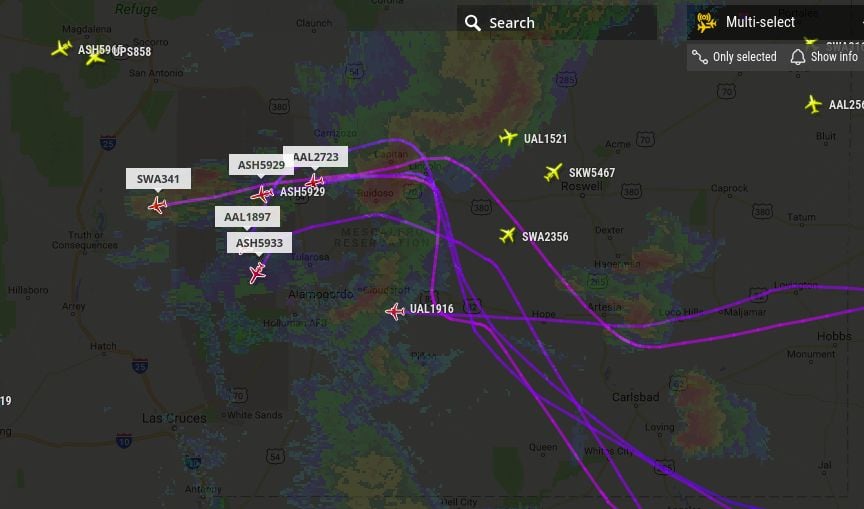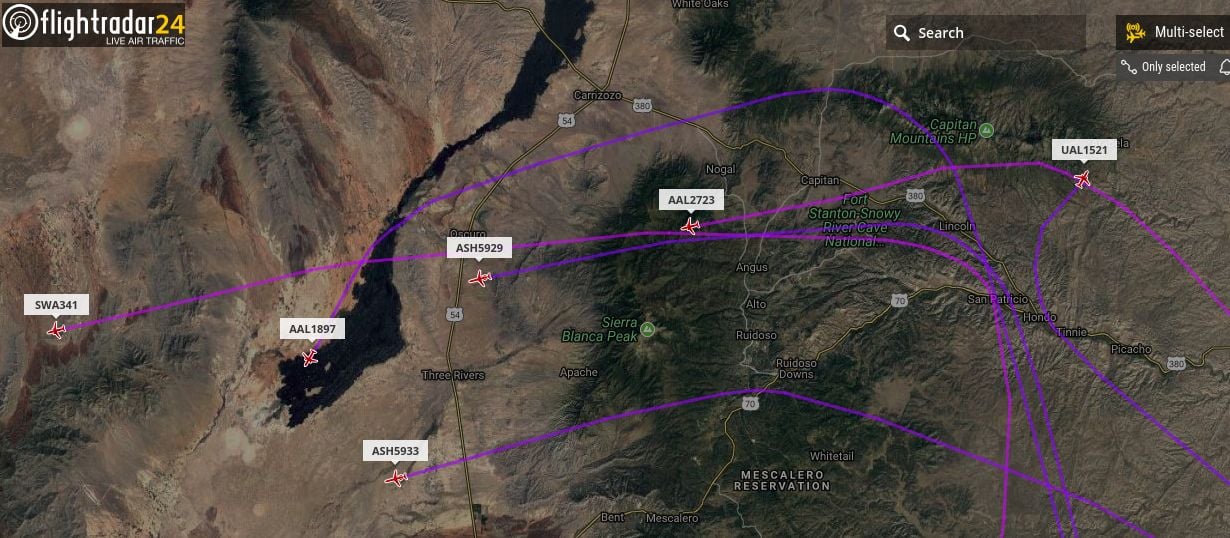AA 1897 SAT-PHX Divert to ELP for Hail Damage
Thanks for posting. That's the first image I've seen which makes the nature of the damage trully apparent. I think what we're looking at here is some residual inner layers of the radome which have been pushed inwards. Earlier images with poorer contrast had led me to believe that the radome had in fact been entirely erased and we were looking at an exposed forward pressure bulkhead. Merely humble SLF here, so I wonder if others more learned on here can advise whether there have been known instances of aircraft losses under such circumstances, and whether forward bulkheads are ever tested or rated with this scenario in mind?
https://en.wikipedia.org/wiki/Southe...ays_Flight_242
..... so I wonder if others more learned on here can advise whether there have been known instances of aircraft losses under such circumstances, and whether forward bulkheads are ever tested or rated with this scenario in mind?
The greater risk is from a large bird. They are qualified to absorb a strike at 250 kts
Thread Starter
Join Date: Jun 2001
Location: Rockytop, Tennessee, USA
Posts: 5,898
Likes: 0
Received 1 Like
on
1 Post
SLF: Doesn't look like they could see much. How do you land in a situation like this? Presumably the auto-landing system will get you on the ground, but does it also keep you in a straight line while you decelerate?
Join Date: Mar 2015
Location: Fort Lauderdale
Posts: 42
Likes: 0
Received 0 Likes
on
0 Posts
The aircraft in question was one of the older America West Basic A319's. Unlike the enhanced aircraft the radar is not nearly as good. Its entirely possible it painted returns that looked reasonable to the crew. The enhanced radars are far better and could theoretically have prevented this.
Join Date: Nov 2005
Location: Potomac Heights
Posts: 470
Likes: 0
Received 0 Likes
on
0 Posts
Join Date: Jan 2007
Location: San Jose
Posts: 727
Likes: 0
Received 0 Likes
on
0 Posts
Southern Airways DC-9 - both engines quit due to ingesting massive amounts of hail:
https://en.wikipedia.org/wiki/Southe...ays_Flight_242
https://en.wikipedia.org/wiki/Southe...ays_Flight_242
Yes, it will continue to track the localizer during the rollout. You have to disconnect the autopilot to turn off the runway.
Join Date: Jul 2014
Location: Germany
Posts: 344
Likes: 0
Received 0 Likes
on
0 Posts
anyway i'll post it and maybe i just did the overlay wrong but i don't think so.

I thought that was more because they suffered compressor stalls but didn't (or couldn't) throttle back to let the engines recover. ISTR that ATC was pushing them to climb so they kept trying to get the engines to produce more power until the compressor blades all fell off.
Sadly, they were within gliding range of an airport when they lost all power, but for some reason they then temporarily lost battery power (including the radios) and without guidance they turned the wrong way - by the time they got the radio back it was too late - they'd lost too much altitude.
Thread Starter
Join Date: Jun 2001
Location: Rockytop, Tennessee, USA
Posts: 5,898
Likes: 0
Received 1 Like
on
1 Post
 Here's the NTSB report:
Here's the NTSB report:https://www.ntsb.gov/investigations/...ts/AAR7803.pdf
Years ago I sat through Archie Trammell's analysis of this 1977 mishap and the role of weather radar in the decision to penetrate the line of storms.
Guest
Join Date: Apr 2009
Location: On the Beach
Posts: 3,336
Likes: 0
Received 0 Likes
on
0 Posts
Guest
Join Date: Apr 2009
Location: On the Beach
Posts: 3,336
Likes: 0
Received 0 Likes
on
0 Posts
Join Date: Apr 2008
Location: nowhere
Posts: 1
Likes: 0
Received 0 Likes
on
0 Posts
Maybe it is best to just go around the whole line instead of penetrating it. This was my flight a little while back. No penetration, no issues. Missed seeing the Grand Canyon though.







